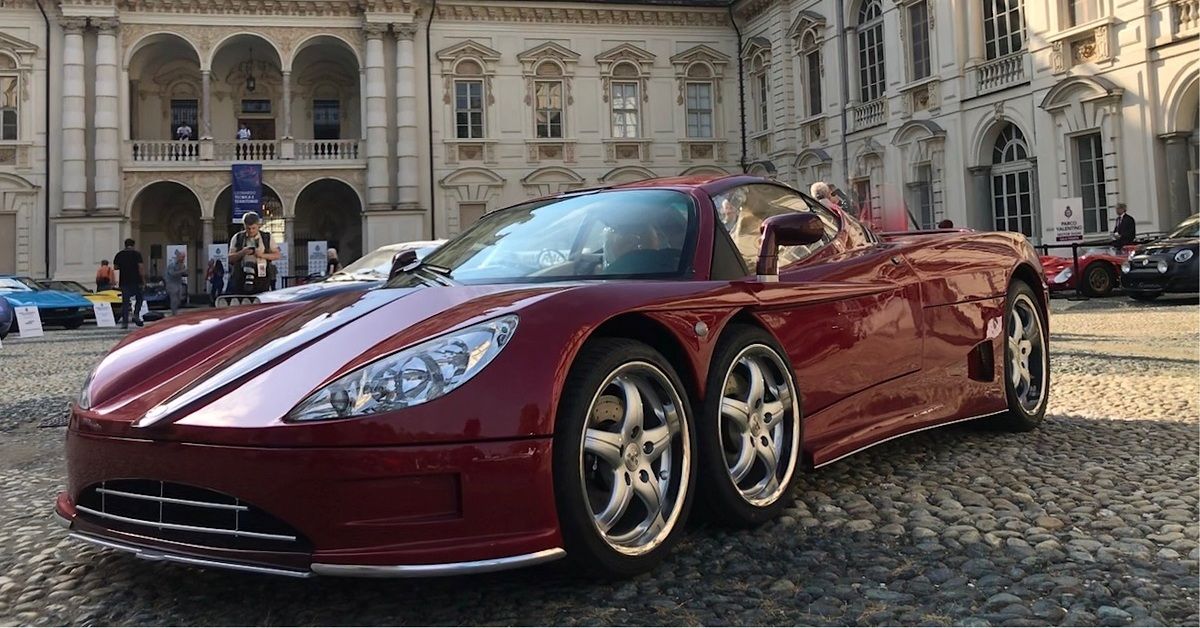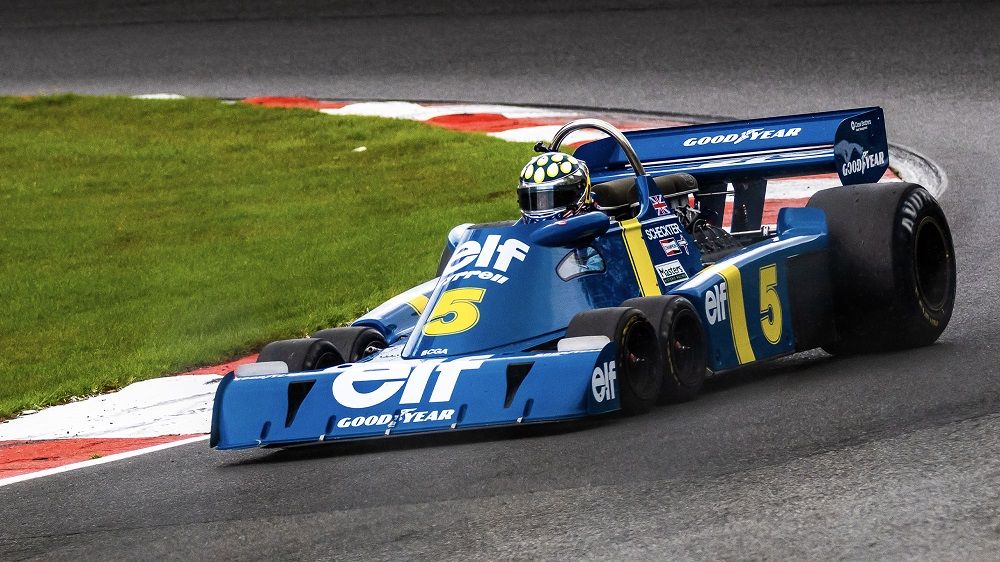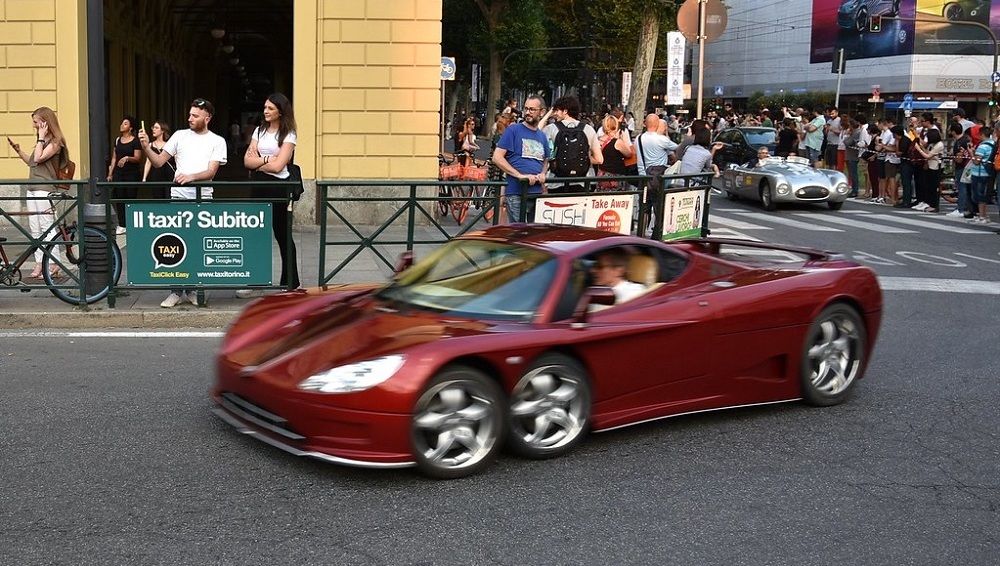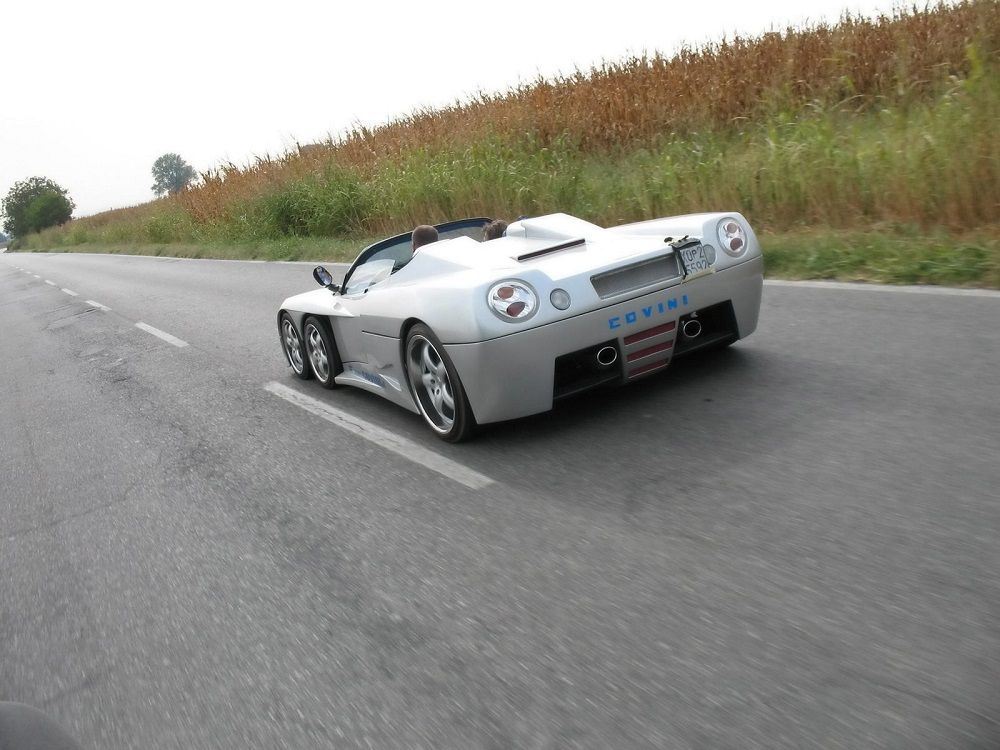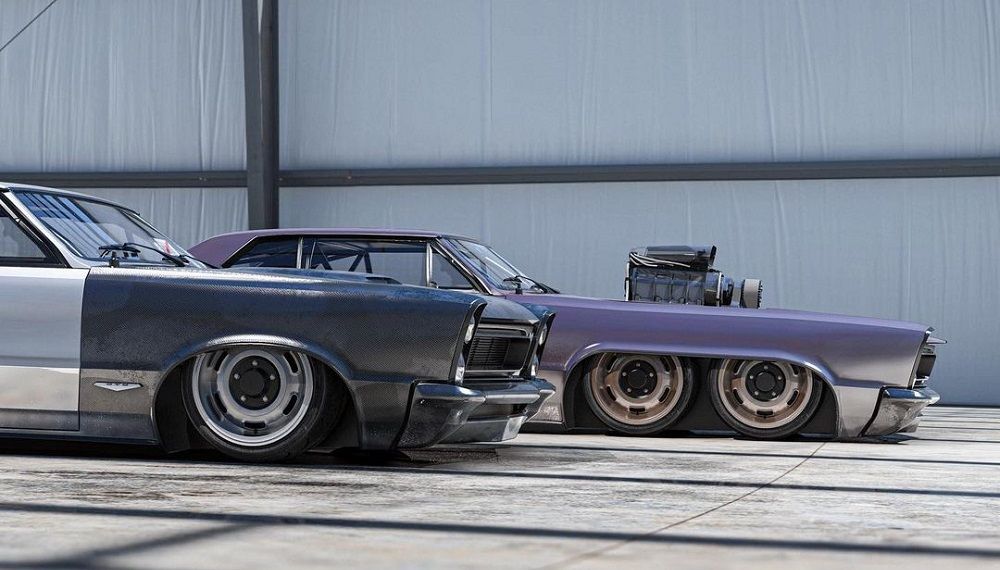Covini’s C6W supercar promised to be the exact kind of stupid vaporware the automotive world has come to expect. To most people, it probably looked like its design was overseen by Aiden, age 7. Oh, it’s got TWO front axles! Well done, Aiden, very creative! We’ll put this on the fridge, right next to those ridiculous tank-tread things your brother Matt drew.
Like the F-35, its development was turbulent - but it actually works now. It turns out everything Covini was saying about the six-wheeled layout did actually have some merit. So let’s take a look, then, at the insect-mobile, and see why this real-life Trailmakers build actually made sense.
Here’s how Covini made their oddball machine start to live up to the hype.
Taking From Precedent
Believe it or not, this wasn’t the first car to try out a six-wheeled layout. In the ’70s, Tyrrell produced some Formula 1 cars with six wheels. You would assume they’d have been laughed off the track, but Tyrrell adhered to the Warren Mosler school: if it looks stupid, but it works, then you’re stupid for hating it. It actually won the Swedish Grand Prix and earned at least eight podium finishes in 1976. They even spawned imitators, although many of them used the third axle in the back despite this layout not being remotely successful. Tyrrell, like Mosler, eventually cleaned up in such an authoritative fashion that the six-wheeler was in fact banned from F1.
The eternally oddball French motoring industry also cranked out a six-wheeled version of Renault’s redoubtable 5 rally hatchback and it competed in the Dakar rally. Further enhancing the Mosler comparison, they made a version with two engines. Covini’s exact layout was used for at least one concept: the Panther Six, produced by the same company that made Cruella De Vil’s car for the 101 Dalmatians movie.
Covini isn’t a completely unknown quantity in the automotive world. They worked on the 1993 Cadillac STS and Callaway C7 Corvette. The company has worked on quite a variety of their own vehicles, including cars that broke the top speed record for diesel cars, twice.
Why Six?
Strangely for a sports car, half the reason Covini gave for the layout were safety-related. Blowouts are far less dangerous. Car and Driver noted that hydroplaning is less likely to be an issue since the front axle can “clear the water” for the second axle. The ride quality is better since bumps are distributed across more points of contact. Braking is better even with smaller discs, because “the total swept area and the mass are greater” – and, obviously, your tires’ contact patch is 50% bigger.
They did it properly, too. The car boasts internal pushrod suspension like a Formula 1 car – an innovation from the manufacturer’s son, who races GT cars. Covini even got Brembo on board to develop a “six-wheel, six-channel ABS system” specifically for the C6W, as Jalopnik notes.
Rubber to the Road
The C6W boasts a 4.2 liter V8 that can make anywhere from 400 to 500hp or more. Most articles that specify say around 430hp and 350 lb-ft of torque. This can be pushed through a six-speed single-clutch paddle-shifter or a six-speed manual. We still don’t know what the figures are for g-forces or brake distance, though the car is a relatively svelte 2500 lbs due to its partially carbon-fiber construction. From the sites that give a figure, 0-60 comes in under 4 seconds. The top speed is a claimed 186 mph. Throttle Xtreme claims the car can also be had with a V12 with over 900 hp.
According to the Jalopnik review, the car handles surprisingly well considering its wheelbase is long enough that you could park it in Inchon and fortify the entire 38th Parallel. You’d hope it would – that’s the whole reason it looks like that in the first place. Stunningly, the steering wheel feels almost exactly like a normal car. Even at speed, yanking the wheel hard turns the car smoothly instead of dramatically slowing it down. Throttle Xtreme adds that the car feels like it pivots around the driver, with “ultra-sharp turn-in” and that the steering provides excellent feedback. Both publications note that the gear shifter is a little obnoxious; Jalopnik’s reviewer said he had high hopes for the paddle-shifter eliminating that issue.
The Future
Last we heard, the C6W was going for an eye-watering $640,000 – more than twice their projected cost in 2004 when they completed the prototype. To clarify, you could buy two McLaren 720S with that money. Hell, you could buy an Aventador SVJ and still have money left over for a delightful two-week Mediterranean tour, including a stop by Covini’s factory in Cortemaggiore to ask them what on earth they think makes the C6W worth that much.
So, it seems like the design does actually make sense. Where are the imitators? Sure, it did take them 30 years to get the thing off the ground, but that’s the hard work done. Why haven’t AMG cooked something up, even just for fun?
It’s still risky because for this design to show what it’s capable of doing it needs the right kind of performance. A six-wheeled Fiat 500 would be pointless, if hilarious. It needs enough power to offset the extra weight of an entire additional axle, and you’re only likely to get that beyond 400 hp, maybe way beyond. We reckon it’d have to be mid-engined, otherwise, you’re just driving a cigar boat with wheels like the GTO render below. Hennessey Performance Engineering probably has the know-how; they’ve stretched chassis before, in some cases to accommodate six wheels. Hennessey Corvette "C8W", anyone? We can only hope.
Sources: Car and Driver, Covini, DriveTribe, Formula 1, Jalopnik, Motor1, Super World, Throttle Xtreme, Top Speed

